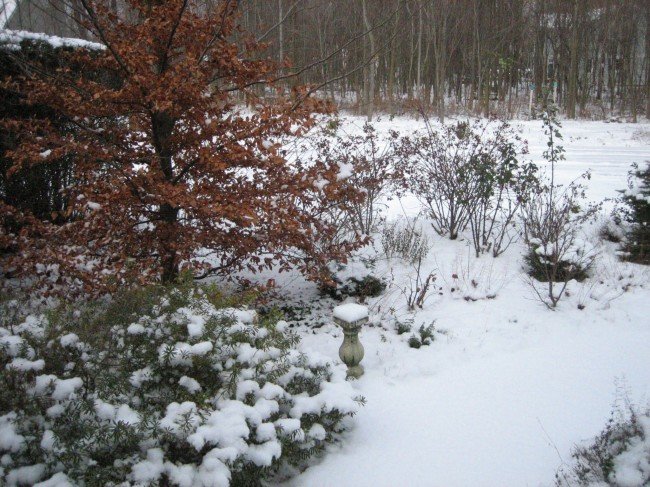
When we’re on the verge of hard frost in the garden, decisions need to be made about how to protect plants. Some gardeners make it a policy not to grow anything that isn’t comfortably frost-resistant in their gardens, and they have no worries about winter’s lowest temperatures. Then there are the risk takers, gardeners who grow plants at the edge of their hardiness zone (myself included), possibly growing a few totally outside of their frost-bearable limits (well, I probably wouldn’t do that).
No one likes to look out the window and see a band of burlap-wrapped dwarfs patiently waiting for spring, yet it seems necessary to wrap these frost-sensitive plants to prevent winter damage, or worse, outright death from cold. It’s useful to remember what the wrapping is meant to do — block wind from fully impacting on the wrapped plant. Plant wrapping doesn’t insulate woody plants in the way that snow cover protects and maintains bearable temperature for perennial roots buried in the ground. Wrapping a plant should either filter the force of the wind (thereby protecting it from the lowest temperatures of wind chill) or re-direct the channel of wind over or around the plant. This only works if the protective wrapping around the plant is at a slight distance away from it, not touching the branches or foliage. It’s also useful to fill the void spaces inside the wrapping with leaves, which may provide some insulating value.
When fabric wrapping (usually burlap, never plastic) is tight around the plant and touching wood or evergreen foliage, it’s an invitation for wind to closely embrace the plant. What’s more, when melting snow collects on surfaces and in crevices of wrapping directly over bare branches, ice begins to form and is able to soak through to the wood, where it re-freezes at night. (The wood of Japanese maples and foliage of rhododendrons is often burned in this way.) The idea of a roomy box of burlap, stapled or tied to stakes or a frame, placed over plants (and possibly stuffed with leaves) would provide the best protection, although that makes for some strange dwarfs waiting for spring. But it’s the price we pay for gardening dangerously with frost-tender plants.
